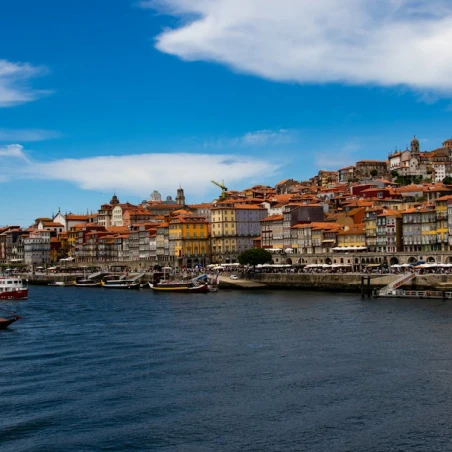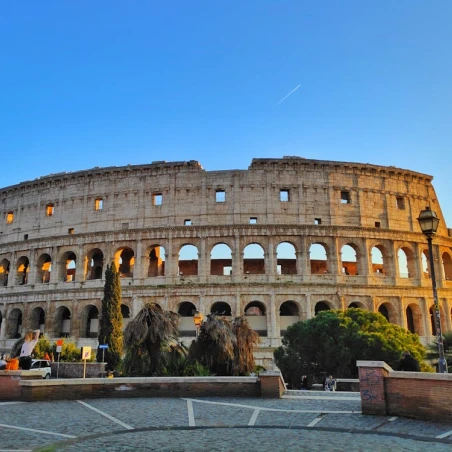Table of Contents:
- What is the average daily budget for a trip to Australia?
- How much does a budget trip cost per day?
- How much does a mid-range trip cost per day?
- How much does a luxury trip cost per day?
- How much do flights to Australia cost?
- What are the costs for an Australian visa and travel insurance?
- How much does accommodation cost in Australia?
- What are the costs for hostels and budget hotels?
- What are the costs for mid-range hotels and Airbnbs?
- What are the costs for luxury hotels and resorts?
- How much does transportation within Australia cost?
- What is the cost of domestic flights?
- What is the cost of car and campervan rentals?
- What is the cost of public transport and long-distance buses?
- How much does food and drink cost in Australia?
- What is the cost of activities and attractions in Australia?
- How can you stay connected affordably in Australia?
- When is the cheapest time to visit Australia?
- What are the best ways to save money on your trip?
What is the average daily budget for a trip to Australia?
The average daily cost for a trip to Australia depends entirely on your travel style, typically ranging from $150 to $450 AUD. All prices in this guide are listed in Australian Dollars (AUD) unless otherwise specified. We'll provide key international costs, like flights, in US Dollars (USD) for context. As you'll see, four factors primarily shape your spending: accommodation, food, activities, and transportation.
A full round trip can cost between $1,300 and $3,000 USD per person. But looking at daily averages gives you a better way to plan your travel. A solo traveler can expect to spend around $1,200 USD for a week. That works out to roughly $2,400 for two weeks or just over $5,000 for a month. Let's break down these costs in the local currency, Australian Dollars (AUD).
How much does a budget trip cost per day?
If you're traveling on a budget in Australia, you can expect to spend between $66 and $85 AUD per day. Sticking to this budget requires some savvy planning. You'll need to stay in hostels or campsites and rely on public transport. To manage expenses, budget travelers often cook their own meals or choose inexpensive street food.
Focusing on free activities also helps stretch your funds. While a strict $66 AUD daily allowance is possible for dedicated backpackers, $85 AUD is a more realistic daily figure. That extra bit gives you more comfort and lets you see a few paid attractions.
How much does a mid-range trip cost per day?
For a mid-range trip, expect to spend about $170 to $184 AUD per person, which usually covers accommodation in boutique or mid-range hotels, dining out, and some paid activities or tour packages.
This budget lets you swap a hostel dorm for a private Airbnb and trade cooking every meal for enjoying local restaurants a few times a week, so it's perfect for couples or anyone who values a bit more privacy.
How much does a luxury trip cost per day?
Luxury travelers will find their daily expenses starting at $517 AUD per person. A high-end spending plan for a two-week trip often exceeds $10,000. At this level, your budget covers everything from five-star luxury hotels, fine dining with tasting menus, and exclusive private tours.
This price point is for travelers who want the ultimate in comfort and once-in-a-lifetime excursions. This budget unlocks truly exceptional experiences, including personalized concierge services, private guides, and access to exclusive amenities.
How much do flights to Australia cost?
International flights are often the biggest part of a travel budget. Long-haul routes from North America and Europe drive up the price. A round-trip ticket to Australia typically ranges from $800 to $2,000 USD, with the final price depending on your departure city, booking time, and travel season.
Here's a pro-tip I always share: one of the best ways to get lower airfare is to book in advance. The sweet spot for booking—often called the "Goldilocks Window"—is between 100 and 200 days before your departure.
Flexible dates can also lead to major savings. Flying during the low season (Australia's winter, June to August) or the shoulder season offers cheaper fares. While there are no guarantees, travel data often suggests that Tuesday is the cheapest day to fly, and March frequently emerges as the cheapest month for flights from the United States. Use flight comparison sites and price alerts to find the best deals.
What are the costs for an Australian visa and travel insurance?
Before you book anything, make sure you have the right travel documents. Most international visitors need a permit to enter Australia, typically an Electronic Travel Authority (ETA) or another visa, depending on their passport. The cost for an ETA is generally between $20 and $30 AUD.
Alongside your visa, you'll also want to get good travel insurance to protect you if things go wrong. A typical insurance policy for a two-week trip ranges from $100 to $200 USD. The final price depends on factors like age, trip length, and selected coverage. For financial protection, ensure your policy covers medical expenses, trip cancellation, and lost baggage.
How much does accommodation cost in Australia?
After flights, accommodation is likely to be your next largest expense. Costs vary based on the type of lodging, its location, and the season. If you're on a tight spending plan, hostels are a popular choice, where dormitory beds start at AUD$20 and private rooms can cost up to AUD$85. For a bit more, mid-range hotels and Airbnbs typically range from AUD$100 to AUD$200 per night. If you're looking for a premium stay, boutique hotels average around AUD$250, while luxury hotels can climb from AUD$900 to over AUD$2,000 per night.
Prices rise during the peak season, which includes summer and school holidays. That's especially true in major cities like Sydney and Melbourne. To manage your accommodation spending effectively, it's really important to book ahead. You can also save big by being flexible with your location or looking at alternatives like holiday parks, especially during the low season.
What are the costs for hostels and budget hotels?
For backpackers and budget travelers, hostels are the cheapest option. A bed in a hostel dorm can cost as little as AUD$20 per night. Private rooms are available for up to AUD$85 per person. Hostels in major cities like Sydney, Melbourne, and Perth often include communal kitchens, which helps save money on food. Trust me, this is a lifesaver for your wallet. For more privacy, budget hotels are another good alternative, with prices for basic rooms typically ranging from AUD$100 to AUD$200 per night.
What are the costs for mid-range hotels and Airbnbs?
For those who value more comfort and privacy, a nightly budget between AUD$100 and AUD$200 per night opens up options for mid-range hotels and various short-term rentals like Airbnb. These options offer more comfort and privacy than hostels, making them suitable for couples or a family vacation. Mid-range hotels provide reliable amenities, while an Airbnb often includes a kitchen and more space. Location and amenities will influence the final cost, with boutique hotels at the higher end costing around AUD$250 per night.
What are the costs for luxury hotels and resorts?
If you're looking for a truly luxurious stay, high-end hotels and resorts deliver top-tier experiences. Prices start at AUD$900 and often exceed AUD$2,000 per night. This luxury level of travel provides exceptional service and amenities like fine dining, private pools, and spas. Prime locations in cities like Sydney and Melbourne or exclusive resorts on the Gold Coast drive up the costs, perfect for travelers who want the most comfortable stay possible.
How much does transportation within Australia cost?
Australia is a vast country, so transportation can be a major part of your spending. Domestic flights are often necessary for covering long distances quickly, but they can be expensive if not booked in advance. For those planning a road trip, a car rental provides flexibility, with prices starting from around AUD$50 per day plus considerable fuel costs. A campervan rental is another popular choice that combines transport with accommodation.
To save money, public transport is your cheapest bet within cities. A single trip costs approximately AUD$2 using systems like Sydney's Opal Card or Melbourne's Myki Card. For travel between cities, long-distance buses like Greyhound offer an affordable alternative for saving money on popular routes.
What is the cost of domestic flights?
Domestic flights are a common form of internal transportation, but airfare can be expensive if you don't plan ahead. For the cheapest domestic flights, booking ahead is key, with the ideal timing being 21 weeks ahead. Last-minute long-distance flights between major cities like Sydney and Melbourne can be particularly costly.
While budget airlines provide lower fares, they often charge extra for luggage. To save money, keep an eye out for airline offers, try to be flexible with your dates, and avoid flying during peak season.
What is the cost of car and campervan rentals?
A car rental for a road trip starts from AUD$50 per day, but remember to budget for fuel. A campervan rental is a popular alternative for independent travel, saving money by combining transport and accommodation. To reduce daily expenses, consider vehicle relocation deals or use a fuel comparison app to find cheaper petrol.
What is the cost of public transport and long-distance buses?
Public transport is a great way to save money when traveling within cities, with a single trip costing around AUD$2. Major cities use travel cards with daily caps under AUD$10, such as Sydney's Opal Card and Melbourne's Myki Card. Melbourne also has a free tram zone in its central business district. For inter-city travel, long-distance buses like Greyhound are an affordable choice for saving money, especially for backpackers using Whimit passes for unlimited travel.
How much does food and drink cost in Australia?
Food and drink costs are a major part of daily expenses in Australia. You can manage your spending by balancing dining out with more affordable options. A meal at a mid-range restaurant typically costs around AUD$20, while fine dining is considerably more. Alcohol prices are also high, with a glass of wine costing between AUD$10 and AUD$15 and a coffee will set you back about AUD$4-5.
Without a doubt, the best way to save money on food is self-catering. This can lower your daily food costs to between AUD$30 and AUD$50. You can buy fresh produce at local markets like Sydney’s Paddy’s Markets or Melbourne’s Queen Victoria Market. For cheaper meals, look for takeaway shops, street food, and classic pub meals, which offer a taste of Australian cuisine without the high price of formal dining.
What is the cost of activities and attractions in Australia?
The cost of activities and attractions in Australia can range from free to surprisingly expensive, greatly impacting your daily expenses. To save money, focus on free activities. You can visit Bondi Beach, explore Melbourne's street art, or hike in the country's many national parks.
When it comes to paid attractions, guided tours for experiences like whale watching can cost between AUD$100 and AUD$200, while surf lessons are around AUD$120. You'll also need to factor in admission tickets, like the three-day pass to Uluru-Kata Tjuta National Park, which costs about AUD$38. Keep in mind that iconic attractions like the Sydney Opera House and the Great Barrier Reef have their own tour costs. A good strategy is to mix these paid experiences with free ones or look for multi-attraction tickets to reduce costs.
How can you stay connected affordably in Australia?
It's easy to stay connected in Australia without paying expensive roaming fees. For modern smartphones, an eSIM is the most convenient choice. To get connected right when you land, a specialized eSIM card for Australia allows for instant activation via a QR code. Using a digital SIM like this provides reliable data plans without needing a physical card.
Another great option is buying a local SIM card. Providers like Telstra, Optus, and Vodafone offer excellent network coverage. A prepaid data plan typically costs between $15 and $30 AUD per month. While you can find free Wi-Fi in public spaces like cafes and hotels, this connectivity can be unreliable and may pose security risks, making it a less dependable primary option.
When is the cheapest time to visit Australia?
The cheapest time to visit Australia is during its low season from June to August. This period is the Australian winter. Because there are fewer tourists, you'll find big savings on both flights and accommodation.
While southern parts of the country experience cooler temperatures, it's an excellent time to visit northern regions. Destinations like Queensland, including Cairns and the Great Barrier Reef, have pleasant, dry weather. This makes it perfect for exploring these attractions. If you want a balance between good prices and great weather, the shoulder seasons—from March to May and September to November—also offer more moderate prices.
What are the best ways to save money on your trip?
Want to keep more money in your pocket? If there's one secret to saving money, it's this: plan ahead. Booking your flight 100-200 days out, especially if you can travel during the cheaper low or shoulder seasons, can lead to major savings on the biggest ticket items. Keeping your dates flexible will also help you find the best deals on fares and accommodation.
For daily expenses, you can travel cheaply by staying in hostels and cooking your own meals. This can lower your daily food costs to between AUD$30 and AUD$50 per day. Using public transport, where single trips cost around AUD$2, is another excellent travel hack.
Exploring car relocation deals can also provide a very cheap way to get around. Many of Australia's best attractions, including its famous beaches and national parks, are free. Avoiding unnecessary costs, such as high alcohol prices and last-minute bookings, will help you stick to your budget.
Sources
Posts you might also like




